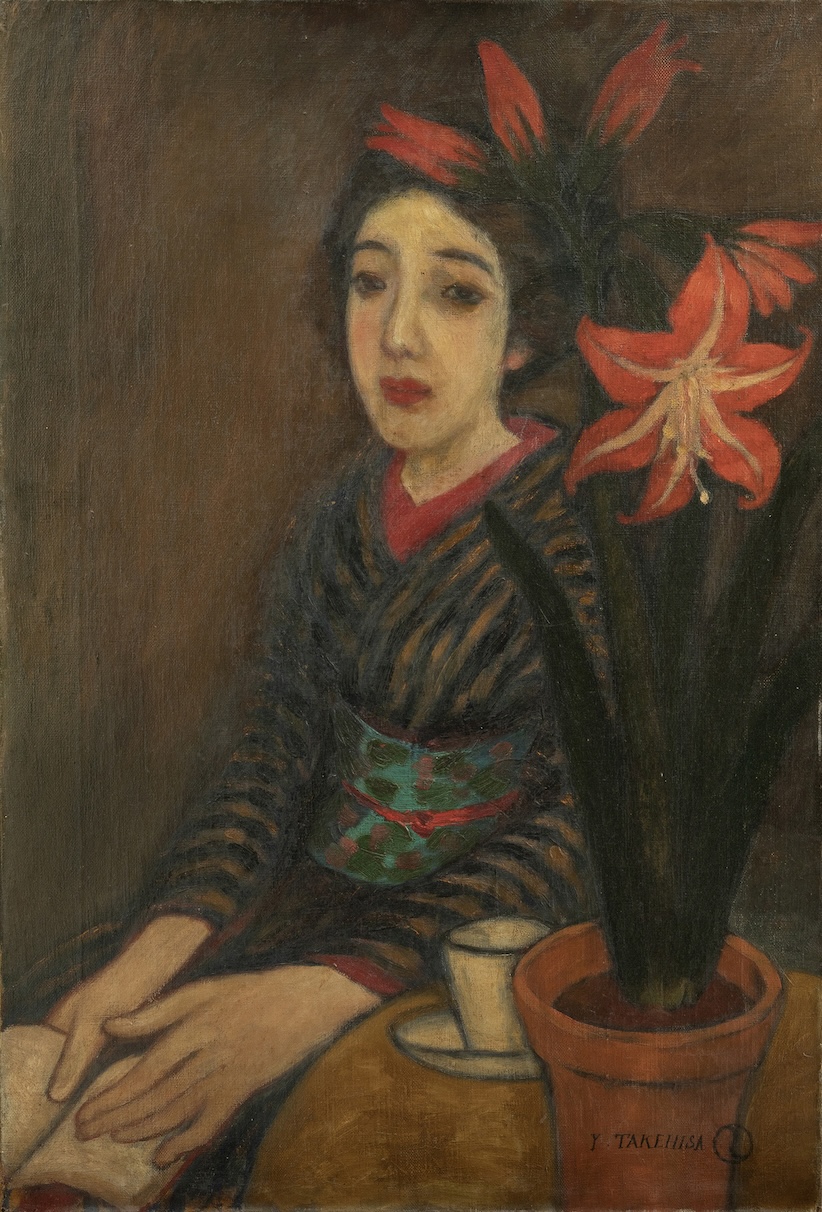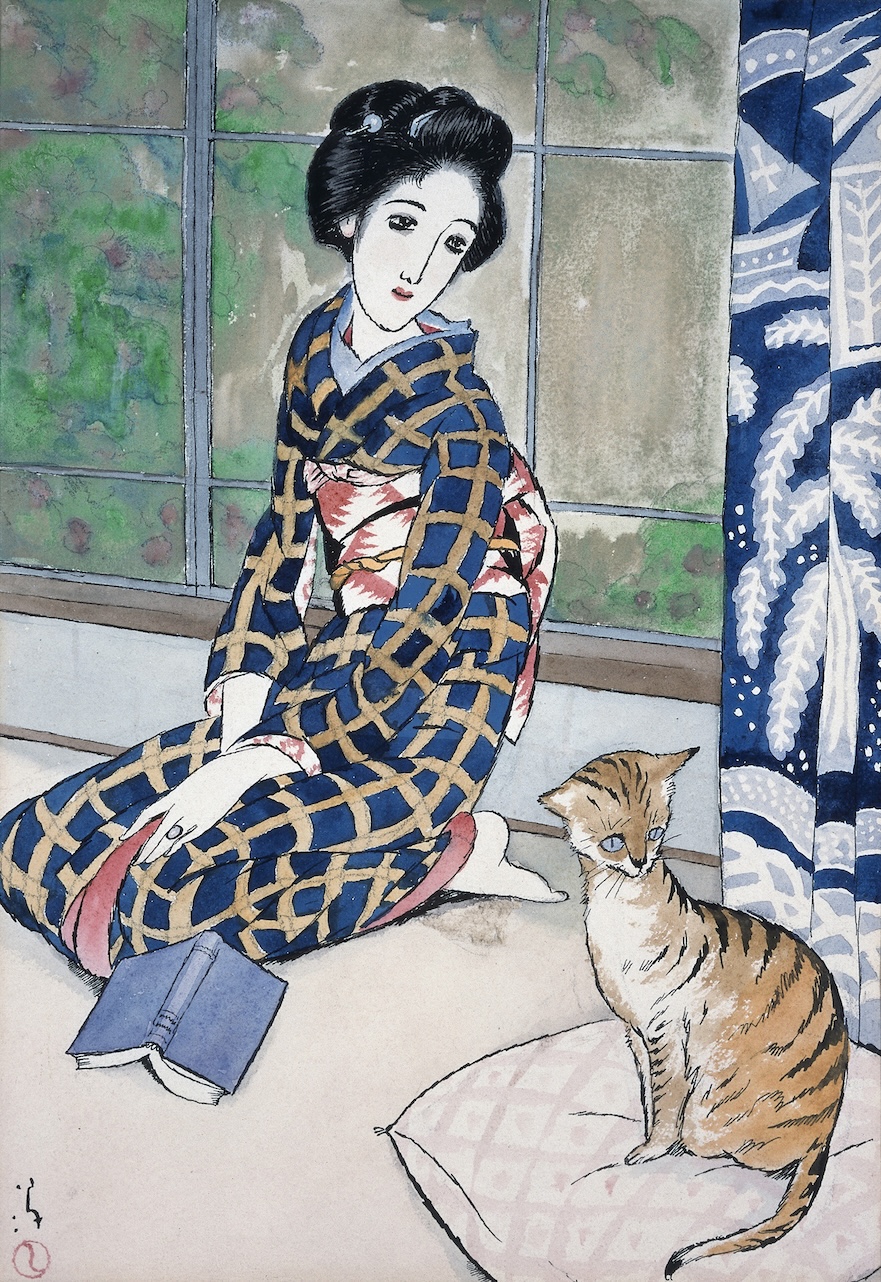TAKEHISA YUMEJI: TAISHO ROMANTICISM AND THE NEW WORLD
HAPPENINGText: Alma Reyes
Portraits of women have always been favorite subjects throughout the history of Japanese art. Woodblock prints and traditional paintings during the Edo era have illustrated women as courtesans, female warriors, female roles in Kabuki, or wives and mothers.
From the Taisho period (1912-1926), the so-called Yumeji Beauty began to seep through the art scene across Japan. Initiated by painter, graphic designer and poet Yumeji Takehisa (1884-1934) around 1907, the style depicted the female character with frail physiques, large eyes and melancholic expressions. His “bijinga” (portraits of beautiful women) works spoke of women who had begun to join the society and empathized with Yumeji’s portrayal of both traditional and fashionable ladies, as popularized by the “moga” (modern girl) trend.
Tokyo Metropolitan Teien Art Museum is presenting “Takehisa Yumeji: Taisho Romanticism and the New World” until August 25th this year. The exhibition honors Yumeji’s 140th birth anniversary with about 180 paintings, drawings, and sketchbooks spanning the artist’s robust career. The collection was loaned primarily from the Yumeji Art Museum in Okayama Prefecture, the artist’s hometown.

Yumeji Takehisa, Amaryllis, 1919, Collection of Yumeji Art Museum
One of the most important highlights of the show is the public unveiling of Amaryllis (1919) for the first time in Tokyo. The woman in a kimono, believed to be a professional model and the artist’s lover at a later time, sits by a pot of bright red amaryllis flowers, and gazes intently with sentimental eyes. The same red accent dabs her lips and inner wear. This painting has been coined as Yumeji’s Mona Lisa. It was first exhibited at an exhibition in Fukushima in 1919, then brought to the reception room of Kikufuji Hotel in Tokyo. Unfortunately, the hotel was shut down in 1944, and the painting, henceforth, was nowhere to be found until its rediscovery in 2022. It has been added, then, to the collection of the Yumeji Art Museum.

Yumeji Takehisa, Late Spring, 1926, Collection of Yumeji Art Museum
The exhibition reveals the pivotal trends of Taisho Romanticism, considered to be Japan’s “belle époque.” The two words Taisho and Roman were said to have been combined in response to Yumeji’s explicit style of bringing out a romantic mood wrapped around both Japanese and Western aesthetics. A sense of nostalgia and liberation erupted from the rigid imperialistic generation, welcoming a novel social lifestyle and mindset shaped by Western modernization. Yumeji was regarded as the leading father of Taisho Romanticism. His gentle interpretations of the feminine quality inspired other Japanese artists. Late Spring (1926), Tatsutahime (1931), Maiko at the Lakeside (early Showa era), and Nude on the West Coast (1931-1932) among others, evoke Yumeji’s distinctive touch on the female charm. Poetic portraits of his wife Tamaki from 1909, such as Apple (1914), especially stirred many hearts across the world. The large, moist eyes, and fragile S-shaped curve are typical features of Yumeji’s approach. He pursued “beauty in daily life,” the ideology, which from the late 19th to early 20th centuries, transcended gracefully towards the Arts and Crafts movement, Art Nouveau and Art Deco—styles clearly visible in his delicate creations.

Yumeji Takehisa, Nude on the West Coast, 1931-1932, Collection of Yumeji Art Museum
The same design mode breathes throughout the Tokyo Metropolitan Teien Art Museum, built in 1933, which makes the building with its epoch-making architecture and interior an ideal venue for this comprehensive exhibition.
A wide array of sketchbooks never made public before are also on view. They narrate Yumeji’s observations during his travels to the U.S. and Europe from 1931. He manifested realistic images of contemporary society while infusing Western artistic elements. The sketches serve as historical documentation of the rapid industrial development abroad, as well as the prominence of socio-politics.
Read more ...





